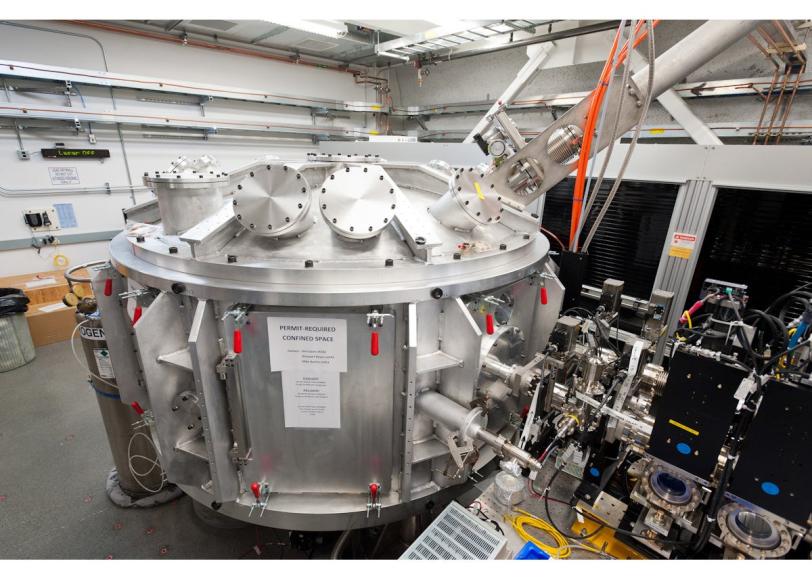Firing Up LCLS for Fifth Run - With All Six Instruments
Firing Up LCLS for Fifth Run - With All Six Instruments
By Janet Rae-Dupree
Firing Up LCLS for Fifth Run - With All Six Instruments
After four hugely successful runs, operation of the Linac Coherent Light Source has been paused briefly to prepare for the Nov. 17 start of Run 5 – the first that will see all six experimental stations come online.
Run 4 concluded Oct. 24 with the final phases of commissioning for the X-ray Correlation Spectroscopy (XCS) instrument, which is used to study atomic-scale equilibrium dynamics in condensed matter systems. The upcoming run, scheduled to conclude May 29, will see the spring commissioning of the Matter in Extreme Conditions (MEC) instrument, designed for use in studying the properties of matter that exists far outside of equilibrium.
“Everyone is extremely excited to see the start of this next run,” said LCLS Deputy Director Uwe Bergmann. “We’ve got a full schedule for all six instruments, so we can expect to continue breaking new scientific ground.”
From its first research operations in October 2009, LCLS operators have continually pushed for shorter, more intense X-ray laser pulses. More than 1,400 scientists from 31 countries have filed 563 proposals – an average of 15 collaborators per proposed experiment. So far, LCLS Director Joachim Stöhr said, 35 experiments have been published, many in high-impact journals such as Science and Nature. At least 19 more papers have been submitted or accepted for publication in the near future, and numerous additional manuscripts are close to submission.
“We are happy to see a steady increase in the rate of publications,” Stöhr said. “In fiscal year 2011, we saw 3,917 hours of user beam time, with 94.5 percent uptime. Our goal next year is to break into 4,000-plus user hours. We continue to expand our capabilities and capacity to enhance our value to the worldwide scientific community.”
Of the 36 experiments scheduled for the upcoming run, three will be related to the MEC’s commissioning. Eleven will use the Coherent X-ray Imaging (CXI) instrument, which provides single-shot imaging of primarily biological atomic-scale and nanoscale structures. Ten experiments will use the X-ray Pump Probe (XPP) instrument, which studies atomic and electronic dynamics after optical excitation. Four experiments will be conducted on each of the remaining instruments, including the just-commissioned XCS, the Soft X-ray Materials Science (SXR) instrument, and the Atomic, Molecular and Optical Science (AMO) instrument.
Editor's note: The Stanford Synchrotron Radiation Lightsource also begins a new run this week. SLAC Today will feature that story in the days ahead.

(Photo by Matt Beardsley)